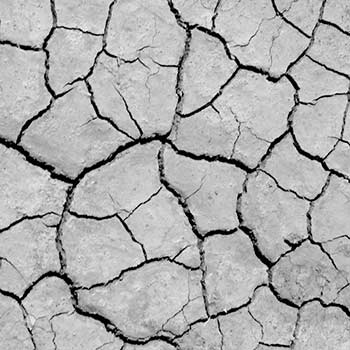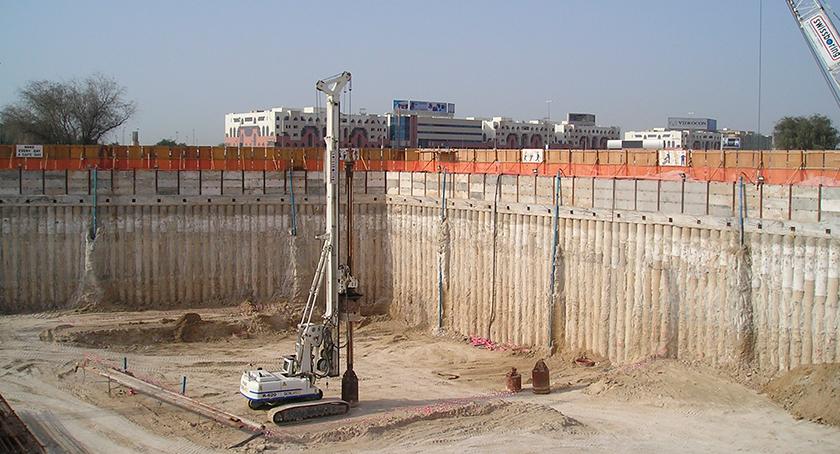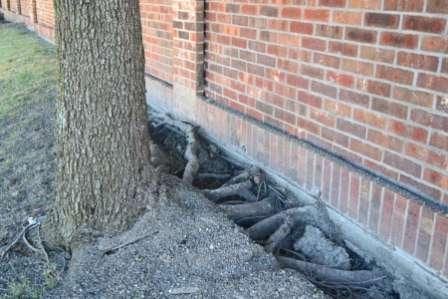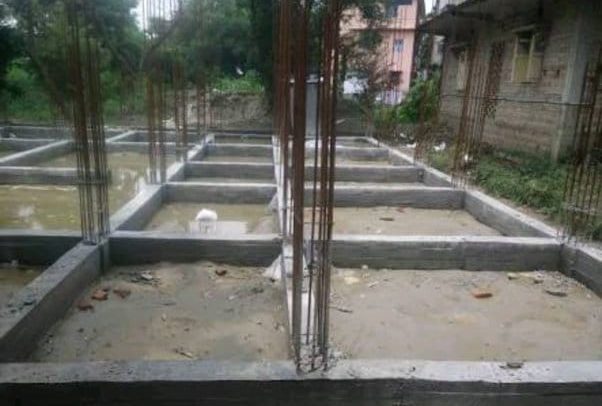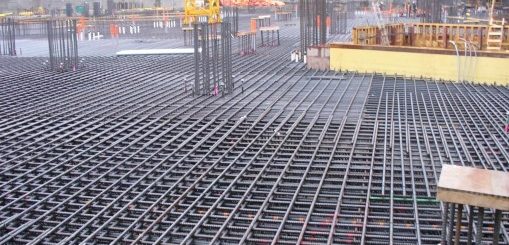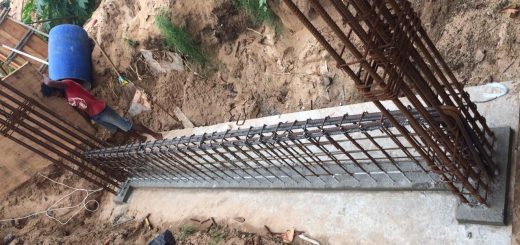Differential Settlement of Foundations
Differential settlement of foundations is connected with many areas of construction and ground conditions. In addition, other environmental changes, external influences such as ground vibrations, etc. also caused the settlement of this nature.
What is differential Settlement
It is uneven/unequal settlement of foundations due to the movement of the ground, changes in the ground conditions and external factors affecting the stability of the foundations.
When there is a uniform settlement of the foundations, we have no major issue if the whole structure settles with the ground floor similarly. However, when the settlement of the structure is significant though it is uniform, there will be issues such as damage to the connections with other structures, formation level difference at the connection to the outside, etc.
Therefore, it is required to avoid differential settlement of foundations and to minimize or maintain the settlement of foundations within the limits.
Causes of Differential Settlement
- Incorrect sizing of foundation
Sizing of the shallow foundations is done based on the allowable bearing capacity.
Area of Foundation = Column Load (SLS) / Allowable Bearing Capacity
The column load at the serviceability limit state (SLS) will be divided by the allowable bearing capacity of the soil to obtain the area of the footings. This is the initiation of the foundation design. In this manner, we maintain the pressure under the foundation at the same level.
When the pressure under all the foundations is similar, there is a high possibility of having a similar settlement of footings if the condition of the ground remains the same for all the footings.
However, if we mistakenly or intentionally, changed the pressure under the footings, there will be different settlements in foundations.
- Expansive Clay
This type of soil change is properties with the change in the moisture levels.
When the moisture content of the soil increases, the clay starts increasing its volume. If there are foundations in these soils, they will be subjected to upward movement if the movement resisting mechanism is not established.
The movement of the soil can lift buildings and it will start to shrink when the soil moisture content is lowered. Mostly this movement can be observed in different areas where the expansive soil exists.
Especial attention shall be made when shallow foundations are designed in these types of soils.
- Poorly Compacted Soil
When it is required, during the construction, there may be soil filling in the area where the foundation is constructed. This may be done as an improvement of the ground. It is required to maintain the uniformed compaction and adequate compaction of soil under the foundation.
If the compaction of the soil is different from one place to another, it could lead to a differential settlement. To avoid the differential settlement of foundations, it is required to the testing the compaction on a random basis.
- Soil with Weak Bearing Capacity
Soils with weak bearing capacity and having variations of their allowable limit could cause settlement of the foundations when different loads are applied.
- Change in the Soil Profile
Soil profile could change from one place to another. It could be vertically or horizontally. Having different ground conditions is the initiation for the differential settlements.
It is required to correct assessment of the condition of the ground before proceeding with the design.
- Change in the Soil Pour Water Pressure / Water Table
Changes in the soil water level could lead to the settlement of the foundations. This issue could arise when there are deep excavations for the construction of foundations in the adjoining land.
Continuous dewatering close to its structure could cause settlement of the foundations if the groundwater recharged is not done adequately or dewatering shall be controlled by continuous shoring up to the rock or impervious layer.
- Vibration
Vibrations induced by the surrounding could affect the part of the structure. If it is felt to the part of the structure, there could be a settlement of the foundation.
- Trees and vegetation
Having vegetation in the soil where the foundations are constructed could lead to the settlement of the foundations when they decomposed with time.
In addition, if there are trees close by, their roots could lift the foundations and damage them. Therefore, special attention shall be made if those kinds of trees are there.
How to Identify Differential Settlements
The formation of cracks in the structure and damage to the non-structural elements such as brick walls is the issue that can be identified as indicators of the differential settlement of foundations.
Some following defects can be highlighted.
- Wall floor damage
- Foundation cracks
- Sticking doors and windows
How to Repair the Foundation
There are conventions and modern methods of repairing the foundations.
The categorization of the repair method is based on the supporting arrangements.
- helical piers, push piers, slab piers
- Repair by concrete underpinning
- Jet grouting
- Micro piles
How to Prevent Differential Settlements
Prevention is better than cure. Therefore, necessary action shall be taken at the initial stage rather than doing the repairs or any modifications to the structure/ground.
- Awareness of ground condition before design and construction
The designer and the construction team shall be well aware of the condition of the ground.
As designers, whether to do geotechnical investigation, at which degree we should do the investigation, what are the required parameters, etc. can be decided only if the designer is having certain knowledge of the condition of the ground.
On the other hand, the construction team shall be aware of the condition of the ground to plan the construction according. Poor knowledge of the soil types, etc. will end up in many construction issues.
- Geotechnical Investigation before the design
The most common practice is to do a geotechnical investigation before proceeding with the design. The design shall be carried out as per the actual condition of the ground rather than designing for hypothetical values assumed.
- Correct Estimation of Bearing Capacity
Based on the data obtained during the geotechnical investigation, the calculation of the bearing capacity of the soil is done. Due to the incorrect interpretation of the investigation date, finally, we may end up with the wrong bearing capacity.
The designer shall be aware of the type of soil and possible value for the bearing capacity. Otherwise, if we design the foundation with the wrong values and there may be a different settlement of foundations.
- Tie beams
It is common practice to provide a tie beam to control the settlement of the structure.
It is recommended to provide tie beams when there are expansive soils. Upward movement of the foundation could be controlled by these beams up to a certain level.
Tie beams shall be designed for bending and shear stresses induced due to the upward movement.
- Ground Improvement
Where it is required, ground improvement shall be done to control the settlement of foundations. Wear areas of the ground could be treated or replaced as required.
- Control Groundwater Level During Construction
When there is construction near a structure and if they are doing dewatering continuously, it will cause settlement of foundations. Further, it could lead to different settlements depending on the length of the structure and it could generate different groundwater levels.
When continuous dewatering is done, the groundwater level is lowered. As a result of that, pouring water pressure under the foundation will reduce. This may cause settlement of the foundations. This could have a differential settlement of foundation on sandy soil.
Continuation of the shoring till the hard layer or rock surface, correct assessment of the influence of the groundwater table lowering, ground water recharging, etc. could be done to avoid issues of this nature. These methods and assessments shall be done under the guidance of good experienced and qualified engineers on this subject.
Related Articles for Foundations
- Combined Footing
- Spread Footing
- Shallow Foundations
- Pier Foundation
- Footing Foundations
- Deep Foundations
- Foundation Failure
- Underpinning
- Eccentrically Loaded Foundations
- Shallow Foundation Failure
- Pile Raft Foundations
- Mat Foundation
- Pile Foundation
- Driven Pile Foundations
- Pile foundations
- Uplift Pressure on Foundations
- How to Determine Foundation Type
- Excavation for Foundation
- Foundation Waterproofing
- Settlement of Shallow Foundations
- Slab Foundations

